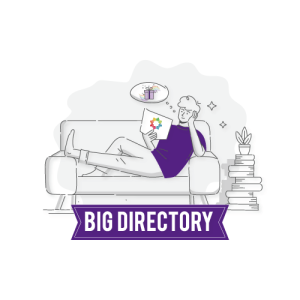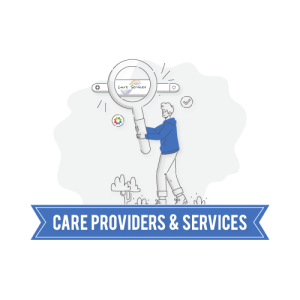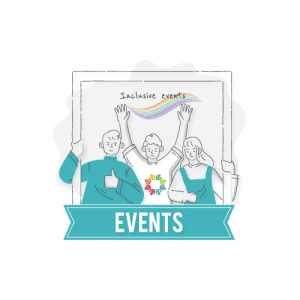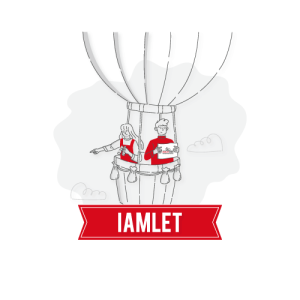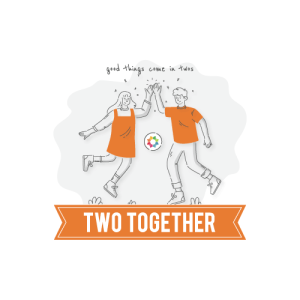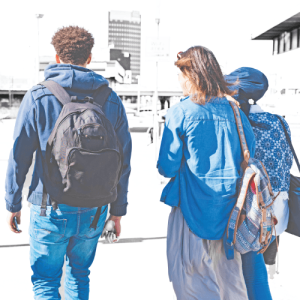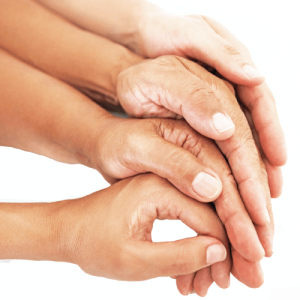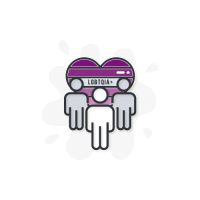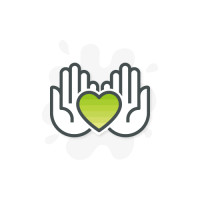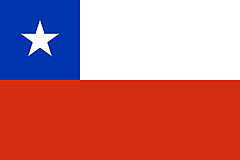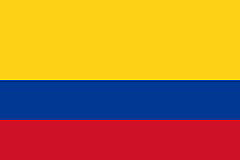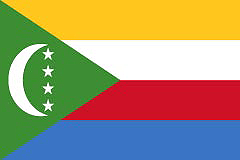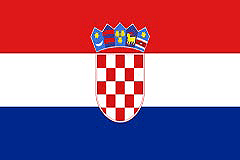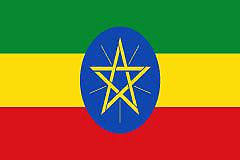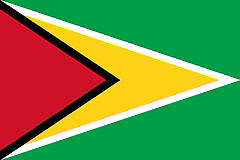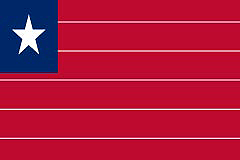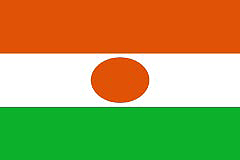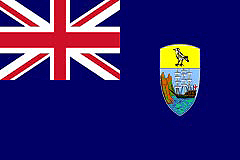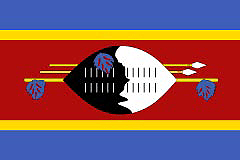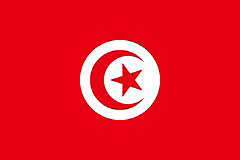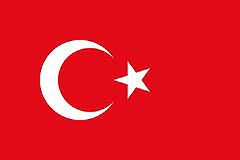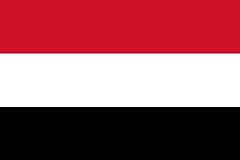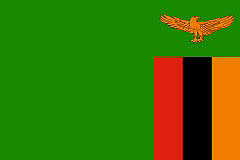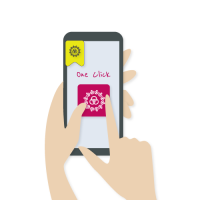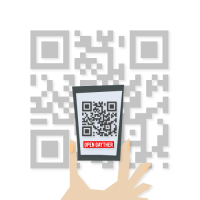
Worldwide LGBTQIA+ Population Index

Discover all of the gay, lesbian, bisexual, transgender, and all groups with non-traditional gender and sexual identities, collectively known as the LGBTQIA+ community, living in countries, sub-regions and continents across the globe. With no official world census, estimates relating to the community’s population vary depending on the country and the source. Estimates range from 2% to as high as 15% of the world’s total population.
The LGBTQIA+ Population index is collated using conservative estimates. The figures are based on those reported and published by each country annually. Though conservative, it is likely that the actual global population relating to the community is much more significant due to more countries becoming more inclusive and introducing laws and protections relating to the LGBTQIA+ communities
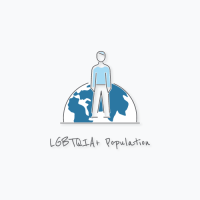
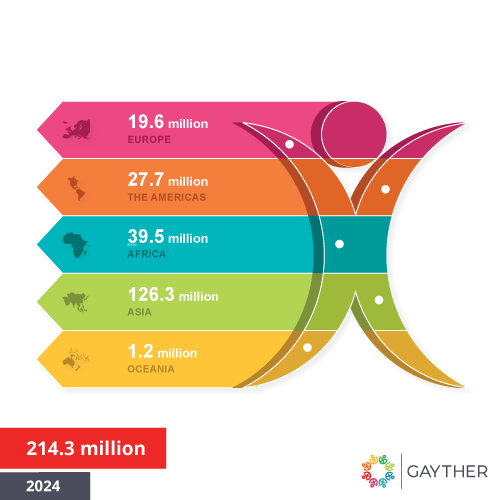
- 18.1% or 38.7 million people live in countries with an equality status of high or very high
- 12.8 million or 6.% live within countries where a death sentence is still the maximum penalty for same-sex prosecutions
- 59.8 million or 27.9% of LGBTQIA+ individuals live in countries where same-sex relationships are illegal
- 18.1% or 38.7 million people live in countries with an equality status of high or very high
- 22.9% or 49.1 million people live in countries with an equality status of low or very low
- 59% or 126.4 million people live in countries with an equality status of medium
- Asia has the largest LGBTQIA+ population with 58.9% (126.3 million), followed by Africa with 18.4% (39.5 million) and the Americas with 13% (27.7 million)
- Oceania has the lowest LGBTQIA+ population with 0.6% or 1.2 million
- 12.8 million or 6.% live within countries where a death sentence is still the maximum penalty for same-sex prosecutions
- 4.1 million or 1.9% live within countries where groups of vigilantes are known to attack, beat, torture and murder members of the LGBTQIA+ community
- 59.8 million or 27.9% of LGBTQIA+ individuals live in countries where same-sex relationships are illegal
- 3.1 million or 1.4% of LGBTQIA+ individuals live in countries where same-sex relationships are illegal, but the law is not enforced
- Africa has seen the most significant population growth at 2.4%, followed by Oceania at 1.2% against the previous year
EXCEPTIONAL AND DIVERSE LGBTQIA+ COMMUNITY
 Click on a specific country within the map to find out the specific LGBTQIA+ population
Click on a specific country within the map to find out the specific LGBTQIA+ populationDISCOVER HOW WELL THE COMMUNITY ARE TREATED..

Even with tailored questions relating to the LGBTQIA+ community, there are other barriers, some generational in which some older community members still find it hard to be open about their gender or sexuality on official polls and censuses. Also, there are concerns about sharing personal information about their gender or sexual identity in countries that are only starting to become more inclusive. Given the stigmatism that still exists and the fact that a change of government or a shift in popular opinion could instantly change things for them, making them targets by being honest about who they are.
Without any official statistics, non-profit organisations, pollsters, and those who analyse trends and movements have predicted that in some countries, such as the USA, the number of people who identify as LGBTQIA+ could be as high as 15% of the total population. In countries where the government is hostile towards the community, many will likely hide their sexuality or gender identity for fear of being targeted and persecuted. The LGBTQIA+ estimates used within the population index are based on various articles, research papers, and studies worldwide over the past twenty-plus years. The LGBTQIA+ population estimates are at a country level, enabling population trends and statics for individual countries, regions and sub-regions. To understand all of the areas and how the LGBTQIA+ population was estimated, click here to view how it was calculated page
Based on the average from various published reports, a conservative estimate is approximately 2.6% of the world’s population identifies as LGBTQIA+. From a community perspective, it is difficult to further breakdown those estimates at a micro-level relating to individual groups; however, the population index is based on:
- Lesbian & Gay – 1.3444%
- Bisexual – 1.2889%
- Transgender – 0.0060%
- Total – 2.6393%
Understanding, even as an estimation, the size of the global LGBTQIA+ community is essential. It reinforces that people who identify as LGBTQIA+ live within every country worldwide, are from every race, and religious denomination, and are all part of the society of the countries they live within. Further validating that they have no choice around who they are often at significant risk to their personal safety. Identifying as gay, lesbian, bisexual, transgender, or any of the groups with non-traditional gender and sexual identities is not a choice but an acceptance of who they are.
LGBTQIA+ and straight people are not different; they all want the same things. To receive their fundamental human rights, to receive an education, to have access to healthcare, to receive a fair wage, and of course, to love whomever they wish. Countries across the globe are changing. Hopefully, we will have a worldwide census with the actual number of LGBTQIA+ people living worldwide one day. In a world where people can be honest and be counted without fear of persecution.
Want to learn more about how the LGBTQIA+ Population Index was calculated? Our how guide provides explanations, scoring and all calculations
TAKING PRIDE IN YOU

Why do countries not include gender and sexual identities in the official census?
Historically, countries have avoided adding sexuality and gender identity questions as part of the official census; however, some countries are starting to change their approach. Though including these questions are generally positive, there are still many barriers to getting accurate information. Some within the LGBTQIA+ community will likely be reluctant to share this part of their identity with the government, fearing how the information might be used. Countries that are liberal today may not be in the future, and in some countries, there is still a stigma associated with identifying as a member of the LGBTQIA+ community

Why do other sites and services estimate higher population numbers?
With no official census or collective polls, all estimates are based on small sample sizes or limited demographical research, all of which are used to predict and calculate the community’s overall size. The community’s size will vary from country to country, with more moderate countries likely reporting higher population sizes. Many will usually hide their true identity for fear of persecution in hostile countries, resulting in lower reported population sizes. The estimates are just that, a prediction or educated guess on the likely population; however, there currently is no accurate way for reporting the actual size of the global community

What happens if a person does not like labels? Would they still be counted?
Without an official census or poll, there is no way to record the actual community size. Individual labels or identities are even harder to calculate or estimate. If a person identifies with any sexuality or gender identity but not the term, they would still be part of the LGBTQIA+ community, just not necessarily aligned to one or more defined groups. In reality, some people would also likely identify with more than one term, such as a specific sexuality and a separate gender identity. Though it does occur, all these factors make it difficult to calculate an accurate representation of the community’s global size, especially not at a micro-level
LGBTQIA+ COUNTRY & REGION GUIDES
Learn more about the worldwide LGBTQIA+ population by country name (in alphabetical order). If you want to learn more about any given country, please click on the flag, or the country name, which will open the required content in a new window
Population by Equality Status
Very High
High
Medium-High
Medium-Low
Low
Very-Low
Subject to the Death Penalty
Individuals at risk of vigilante beatings, torture or murder
EXCEPTIONAL PEOPLE MAKING HISTORY

When reviewing data, it is crucial to understand what it represents, whether it reflects the world and the experience of all those affected. Changes within any given country or region are not restricted to a specific month of the year or even are automatically triggered. Change, especially concerning equality, gender recognition, same-sex marriages and the status of gay conversion therapy, often takes work. Typically by many large groups of dedicated and focused individuals advocating and fighting for justice for positive change within their local communities.
The indices have been created to help you understand the world around you; however, engaging with your global community is essential. It is vital, especially if you are familiar with your desired destination. By reaching out and communicating with other members of the LGBTQIA+ community, you can establish critical details. It only takes a small amount of effort in locating people from or those who have already visited your particular destination for advice. Engaging on social media and Gayther’s networking platform, Gayther Affinity, can help you connect with the global LGBTQIA+ community.
SMARTPHONE SHORTCUTS & BOOKMARKS
Gayther...your community resources
Three dedicated websites offer various tools, services, guides, and much more. Free tools and services tailored toward all groups within the global LGBTQIA+ community
There are thousands of events taking place, it is not always easy to know what is going on and when, Gayther can help
RESOURCES TO HELP YOUR FRIENDS, FOLLOWERS, CUSTOMERS…
With over one thousand data points relating to weather stations worldwide, hundreds of LGBTQIA+ country and state travel guides, as well as community-related articles, fun and games, there is something for everyone on Gayther. Help your friends, followers or customers by including a badge or any one of the hundreds of colourful QR Codes within your newsletter, blog, vlog or website to direct them to resources that relate directly to you or your business or service. Discover QR Codes and Gayther Badges today
- The index has been compiled and is correct as of May 30, 2024
- The index has been compiled using a variety of different sources, including news articles, publications and websites such as Wikipedia
IMPORTANT DISCLAIMER: The LGBTQIA+ population index is based on conservative estimates relating to the global community’s size, which has been applied to the total population recorded in 2021. We cannot accurately confirm the actual number of LGBTQIA+ individuals living within any given country. There are no official censuses that focus specifically on sexual orientations or gender identities; therefore, the volumes are based on reasonable estimates. We acknowledge that the actual size may be higher or lower than our estimates in certain countries. The index is a global index and will include countries where identifying as LGBTQIA+ is considered illegal or where the individual is likely to be persecuted. The estimates are applied to the entire world population. The index is for illustration purposes only and is not a census or tool to single out or isolate a proportion of any given country’s population. It is essential that before travelling that you independently establish information relating specifically to your own requirements and circumstances. Though we endeavour to keep all information across the site updated, we do not provide any guarantees to the accuracy and completeness of any information displayed. This page may contain external links to third party websites; Gayther provides these links for your convenience and does not endorse, warrant or recommend any particular products or services. By clicking on any external links, you will leave Gayther and be taken to the third-party website, which you do so at your own risk and by accessing the site, you will be required to comply with the external third party’s terms and conditions of use and privacy policies
Functional Always active
Preferences
Statistics
Marketing
Accessibility
Accessibility modes
Online Dictionary
Readable Experience
Visually Pleasing Experience
Easy Orientation
Home | GAYTHER LGBT
Accessibility Statement
- gayther.lgbt
- December 5, 2025
Compliance status
We firmly believe that the internet should be available and accessible to anyone, and are committed to providing a website that is accessible to the widest possible audience, regardless of circumstance and ability.
To fulfill this, we aim to adhere as strictly as possible to the World Wide Web Consortium’s (W3C) Web Content Accessibility Guidelines 2.1 (WCAG 2.1) at the AA level. These guidelines explain how to make web content accessible to people with a wide array of disabilities. Complying with those guidelines helps us ensure that the website is accessible to all people: blind people, people with motor impairments, visual impairment, cognitive disabilities, and more.
This website utilizes various technologies that are meant to make it as accessible as possible at all times. We utilize an accessibility interface that allows persons with specific disabilities to adjust the website’s UI (user interface) and design it to their personal needs.
Additionally, the website utilizes an AI-based application that runs in the background and optimizes its accessibility level constantly. This application remediates the website’s HTML, adapts Its functionality and behavior for screen-readers used by the blind users, and for keyboard functions used by individuals with motor impairments.
If you’ve found a malfunction or have ideas for improvement, we’ll be happy to hear from you. You can reach out to the website’s operators by using the following email info@gayther.com
Screen-reader and keyboard navigation
Our website implements the ARIA attributes (Accessible Rich Internet Applications) technique, alongside various different behavioral changes, to ensure blind users visiting with screen-readers are able to read, comprehend, and enjoy the website’s functions. As soon as a user with a screen-reader enters your site, they immediately receive a prompt to enter the Screen-Reader Profile so they can browse and operate your site effectively. Here’s how our website covers some of the most important screen-reader requirements, alongside console screenshots of code examples:
-
Screen-reader optimization: we run a background process that learns the website’s components from top to bottom, to ensure ongoing compliance even when updating the website. In this process, we provide screen-readers with meaningful data using the ARIA set of attributes. For example, we provide accurate form labels; descriptions for actionable icons (social media icons, search icons, cart icons, etc.); validation guidance for form inputs; element roles such as buttons, menus, modal dialogues (popups), and others. Additionally, the background process scans all the website’s images and provides an accurate and meaningful image-object-recognition-based description as an ALT (alternate text) tag for images that are not described. It will also extract texts that are embedded within the image, using an OCR (optical character recognition) technology. To turn on screen-reader adjustments at any time, users need only to press the Alt+1 keyboard combination. Screen-reader users also get automatic announcements to turn the Screen-reader mode on as soon as they enter the website.
These adjustments are compatible with all popular screen readers, including JAWS and NVDA.
-
Keyboard navigation optimization: The background process also adjusts the website’s HTML, and adds various behaviors using JavaScript code to make the website operable by the keyboard. This includes the ability to navigate the website using the Tab and Shift+Tab keys, operate dropdowns with the arrow keys, close them with Esc, trigger buttons and links using the Enter key, navigate between radio and checkbox elements using the arrow keys, and fill them in with the Spacebar or Enter key.Additionally, keyboard users will find quick-navigation and content-skip menus, available at any time by clicking Alt+1, or as the first elements of the site while navigating with the keyboard. The background process also handles triggered popups by moving the keyboard focus towards them as soon as they appear, and not allow the focus drift outside it.
Users can also use shortcuts such as “M” (menus), “H” (headings), “F” (forms), “B” (buttons), and “G” (graphics) to jump to specific elements.
Disability profiles supported in our website
- Epilepsy Safe Mode: this profile enables people with epilepsy to use the website safely by eliminating the risk of seizures that result from flashing or blinking animations and risky color combinations.
- Visually Impaired Mode: this mode adjusts the website for the convenience of users with visual impairments such as Degrading Eyesight, Tunnel Vision, Cataract, Glaucoma, and others.
- Cognitive Disability Mode: this mode provides different assistive options to help users with cognitive impairments such as Dyslexia, Autism, CVA, and others, to focus on the essential elements of the website more easily.
- ADHD Friendly Mode: this mode helps users with ADHD and Neurodevelopmental disorders to read, browse, and focus on the main website elements more easily while significantly reducing distractions.
- Blindness Mode: this mode configures the website to be compatible with screen-readers such as JAWS, NVDA, VoiceOver, and TalkBack. A screen-reader is software for blind users that is installed on a computer and smartphone, and websites must be compatible with it.
- Keyboard Navigation Profile (Motor-Impaired): this profile enables motor-impaired persons to operate the website using the keyboard Tab, Shift+Tab, and the Enter keys. Users can also use shortcuts such as “M” (menus), “H” (headings), “F” (forms), “B” (buttons), and “G” (graphics) to jump to specific elements.
Additional UI, design, and readability adjustments
- Font adjustments – users, can increase and decrease its size, change its family (type), adjust the spacing, alignment, line height, and more.
- Color adjustments – users can select various color contrast profiles such as light, dark, inverted, and monochrome. Additionally, users can swap color schemes of titles, texts, and backgrounds, with over seven different coloring options.
- Animations – person with epilepsy can stop all running animations with the click of a button. Animations controlled by the interface include videos, GIFs, and CSS flashing transitions.
- Content highlighting – users can choose to emphasize important elements such as links and titles. They can also choose to highlight focused or hovered elements only.
- Audio muting – users with hearing devices may experience headaches or other issues due to automatic audio playing. This option lets users mute the entire website instantly.
- Cognitive disorders – we utilize a search engine that is linked to Wikipedia and Wiktionary, allowing people with cognitive disorders to decipher meanings of phrases, initials, slang, and others.
- Additional functions – we provide users the option to change cursor color and size, use a printing mode, enable a virtual keyboard, and many other functions.
Browser and assistive technology compatibility
We aim to support the widest array of browsers and assistive technologies as possible, so our users can choose the best fitting tools for them, with as few limitations as possible. Therefore, we have worked very hard to be able to support all major systems that comprise over 95% of the user market share including Google Chrome, Mozilla Firefox, Apple Safari, Opera and Microsoft Edge, JAWS and NVDA (screen readers).
Notes, comments, and feedback
Despite our very best efforts to allow anybody to adjust the website to their needs. There may still be pages or sections that are not fully accessible, are in the process of becoming accessible, or are lacking an adequate technological solution to make them accessible. Still, we are continually improving our accessibility, adding, updating and improving its options and features, and developing and adopting new technologies. All this is meant to reach the optimal level of accessibility, following technological advancements. For any assistance, please reach out to info@gayther.com

